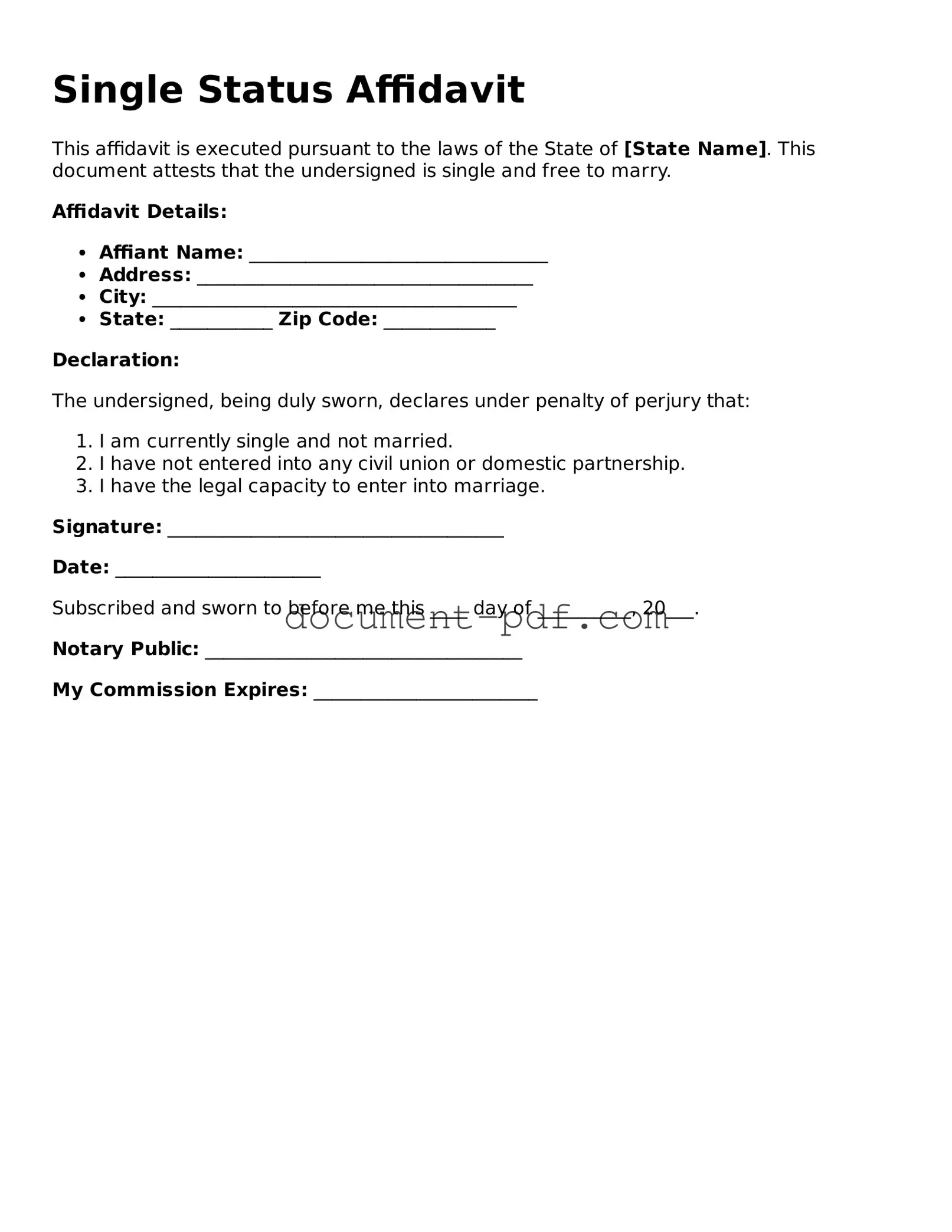Attorney-Approved Single Status Affidavit Document
The Single Status Affidavit is a legal document that verifies an individual's single status, often required for marriage or other legal purposes. This form serves as a declaration that the signer is not currently married and is eligible to enter into a marriage contract. Completing this affidavit is essential for ensuring compliance with legal requirements, so take action today by filling out the form by clicking the button below.
Access Single Status Affidavit Editor Here
